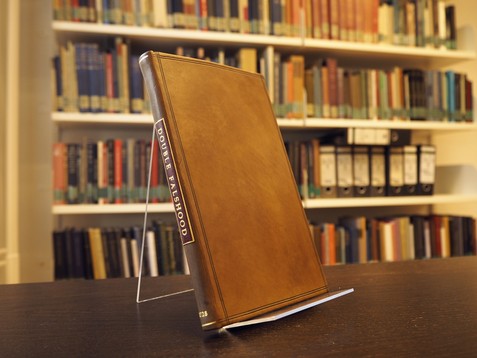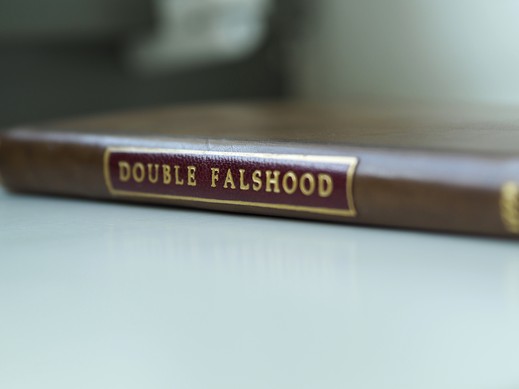Double Falsehood
From Cardenio to Double Falsehood: Lewis Theobald and Shakespeare's Lost Work
The Munich Shakespeare Library has recently acquired a copy of Double Falshood, or the Distrest Lovers, published by J. Watts in London in the second edition of 1728. In the annals of Shakespearean drama, few plays have stirred as much debate and mystery as Double Falsehood, easily the most controversial of Shakespearean apocrypha. Its premiere in December 1727 was a historic event in its own right, but it is the peculiar circumstances surrounding this production that continue to captivate scholars and enthusiasts alike.
Double Falsehood took to the stage in December 1727, with its production spearheaded by Lewis Theobald, a prominent figure in the Shakespearean theatre scene of his time. Theobald not only directed the play but also made the audacious assertion that it was based on several lost Shakespearean manuscripts he had discovered. Theobald claimed to possess three original manuscripts in varying states of legibility, as stated in the preface to the published version of Double Falsehood. However, no concrete proof of these manuscripts has ever surfaced and so the staging of the play has been succeeded by vivacious debate as to the play’s authenticity. Alexander Pope, a contemporary of Theobald, for one, was convinced the play was a forgery.
Double Falsehood follows the character of Cardenio, a figure borrowed from Miguel de Cervantes' classic Don Quixote. This literary connection adds another layer of complexity to the play's origins as there is substantial historic evidence of a play titled The History of Cardenio, which was likely staged in 1613 and might have been a collaborative effort between John Fletcher, Shakespeare’s successor as the house playwright to the King’s Men, and Shakespeare himself. Scholars have debated whether Double Falsehood and The History of Cardenio are identical plays or distinct works with shared elements. This is further complicated by the fact that it cannot be said with any certainty whether Theobald had ever known of a lost 1613 play about Cardenio and therefore knew what material to base a potential forgery on. These questions remain unanswered, and maybe unanswerable, to date. A further aspect that complicates the matter is the undeniable hand of Lewis Theobald in Double Falsehood. Scholars agree that Theobald likely penned at least parts of the play himself and therefore distorted any original Shakespearean text, if the latter had ever existed.
The question of whether Double Falsehood belongs in the Shakespearean canon also remains a subject of debate. Most controversially, Methuen Drama’s widely used scholarly Shakespeare edition The Arden Shakespeare chose to include the play. Proponents of the play’s integration into the canon argue that linguistic analysis and thematic elements found within the play suggest Shakespeare's influence or authorship while detractors, on the other hand, highlight the lack of concrete evidence linking the play directly to Shakespeare.
In light of the evidence available, it is impossible to definitively establish a connection between Double Falsehood and the lost Cardenio play, believed to have been written by Fletcher and Shakespeare. What is clear, however, is that Double Falsehood bears the indelible mark of Lewis Theobald's influence. Whether it was only modified from an original manuscript or crafted as an outright forgery is unclear. The play's existence continues to tantalise, inviting ongoing exploration and speculation within the realm of Shakespearean scholarship. Perhaps not surprisingly given its controversial history, original editions of Double Falsehood are rare. The title page of our copy has been inscribed with the name 'Brydges Blackford' and therefore might originate from a private library on the Isle of Wight as there are records of a man with this name living on the island in the first half of the eighteenth century.






